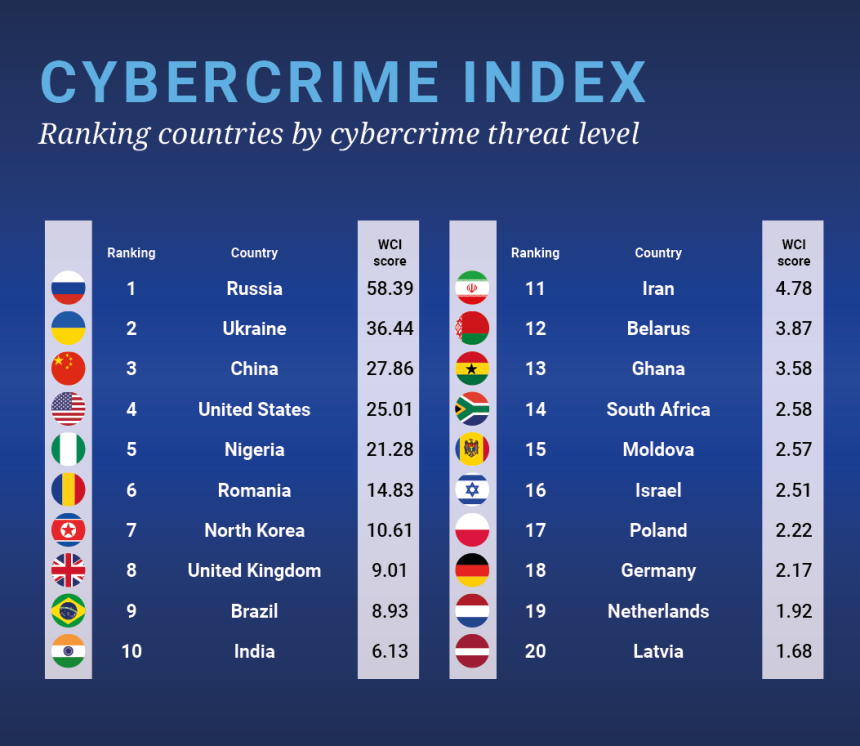Specialists from the University of Oxford and the University of New South Wales conducted a three-year study to identify key sources of cybercrime worldwide. During this research, they created the World Cybercrime Index (WCI), based on assessments from 92 cybercrime experts from around the world.
The results of the study indicated that the greatest threat in this area comes from several countries.
Russia emerged as the main hotspot of cybercrime with 58.39 points, followed by Ukraine, China, the United States, and Nigeria. Also among the top ten hotspots of global cybercrime are Romania, North Korea, Britain, Brazil, and India.
These findings will help national cybersecurity agencies focus their attention on the most active centers of hacker activity.
Scientists also hope to study the impact of various factors on the level of cybercrime, such as the level of education, GDP, and the level of corruption in different countries.

The study ‘Mapping the global geography of cybercrime with the World Cybercrime Index’ has been published in the journal PLOS ONE.
The five major categories of cybercrime assessed by the study were:
1. Technical products/services (e.g. malware coding, botnet access, access to compromised systems, tool production).
2. Attacks and extortion (e.g. denial-of-service attacks, ransomware).
3. Data/identity theft (e.g. hacking, phishing, account compromises, credit card comprises).
4. Scams (e.g. advance fee fraud, business email compromise, online auction fraud).
5. Cashing out/money laundering (e.g. credit card fraud, money mules, illicit virtual currency platforms).




















